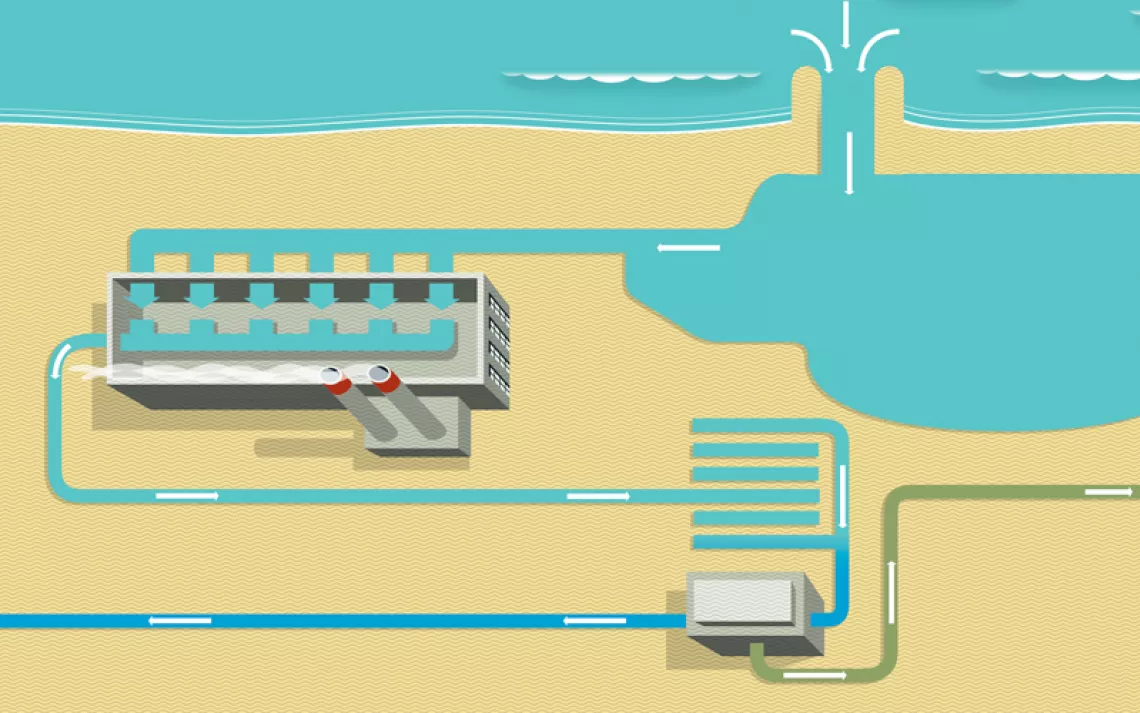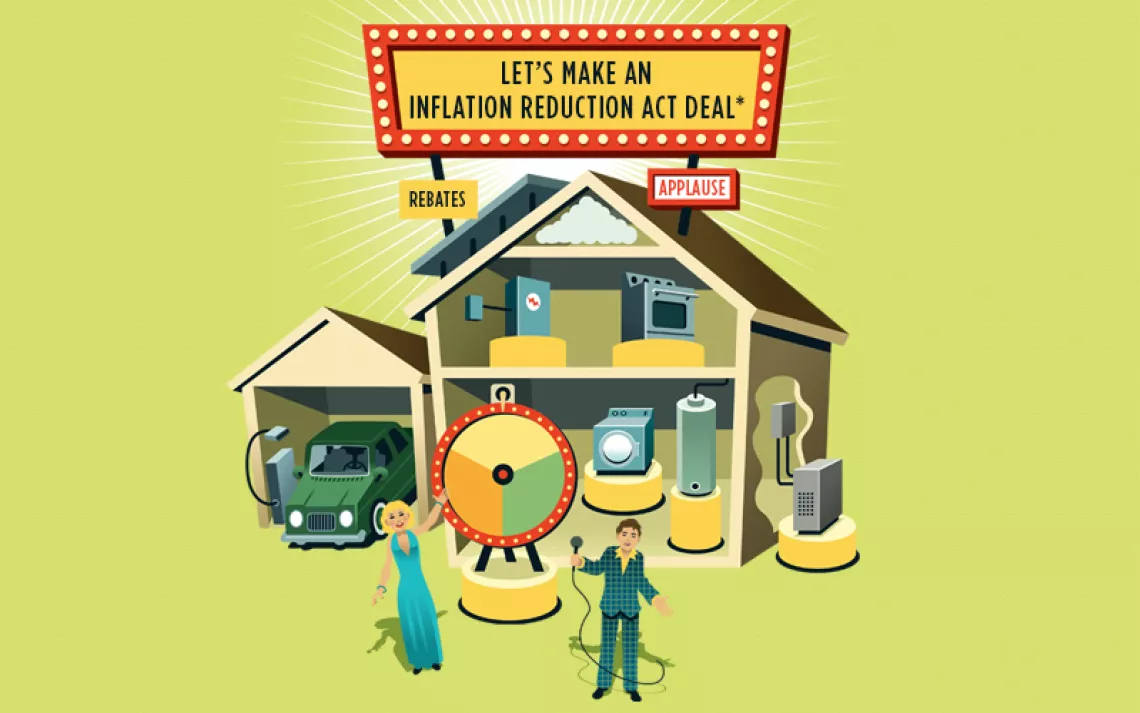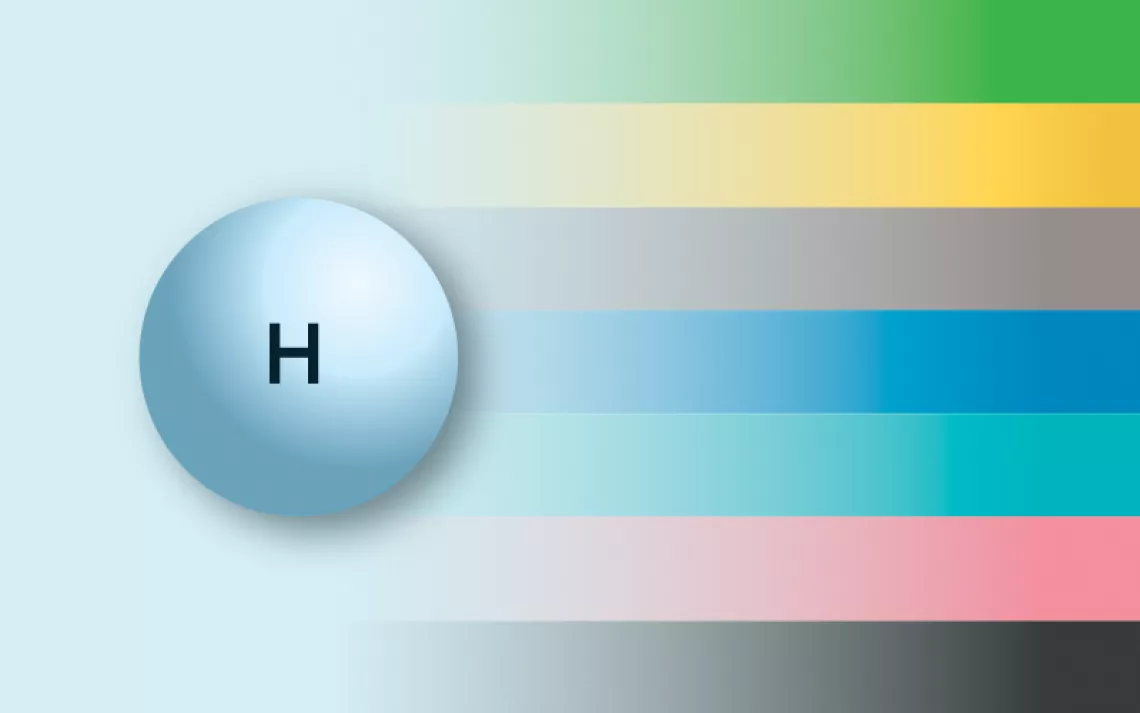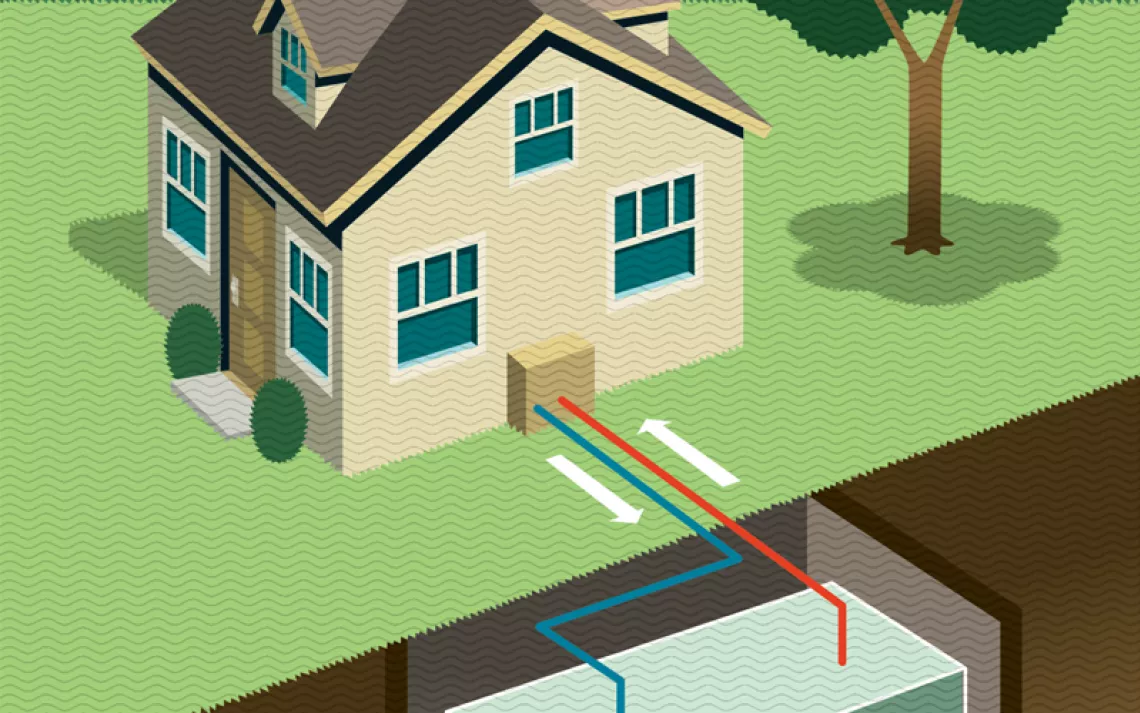Solar Designs From Nature
Scientists have recently identified some of the ingenious ways that nature maximizes solar harvest
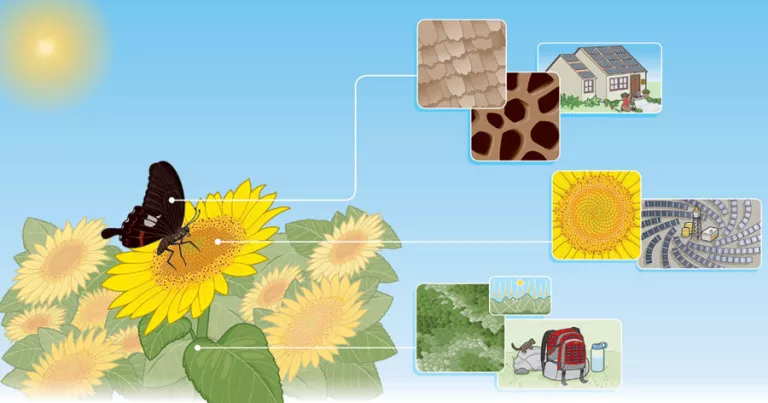
In the quest to draw power from the sun, nothing is more motivated than plants and insects. What's "alternative energy" for us is essential energy to, for example, a butterfly. Solar energy is the key ingredient in photosynthesis and delivers the main source of heat to all creatures without warm blood. Scientists have recently identified some of the ingenious ways that nature maximizes solar harvest. The lessons are directly applicable to the creation of more efficient solar panels, more powerful solar installations, and perhaps even high-yield electro-fuels.
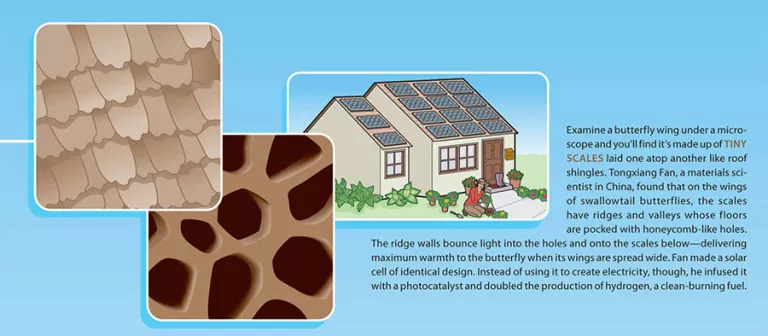
Examine a butterfly wing under a microscope and you'll find it's made up of tiny scales laid one atop another like roof shingles. Tongxiang Fan, a materials scientist in China, found that on the wings of swallowtail butterflies, the scales have ridges and valleys whose floors are pocked with honeycomb-like holes. The ridge walls bounce light into the holes and onto the scales below--delivering maximum warmth to the butterfly when its wings are spread wide. Fan made a solar cell of identical design. Instead of using it to create electricity, though, he infused it with a photocatalyst and doubled the production of hydrogen, a clean-burning fuel.
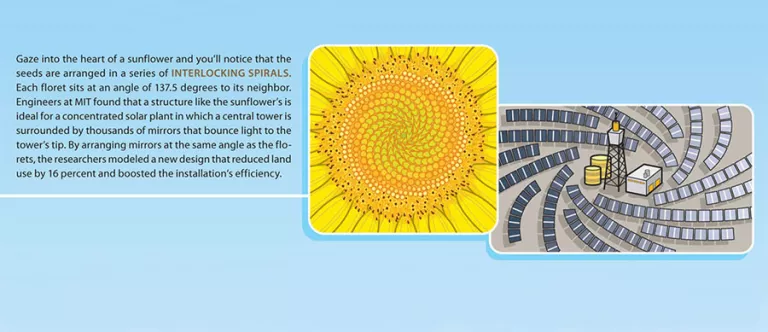
Gaze into the heart of a sunflower and you'll notice that the seeds are arranged in a series of interlocking spirals. Each floret sits at an angle of 137.5 degrees to its neighbor. Engineers at MIT found that a structure like the sunflower's is ideal for a concentrated solar plant in which a central tower is surrounded by thousands of mirrors that bounce light to the tower's tip. By arranging mirrors at the same angle as the florets, the researchers modeled a new design that reduced land use by 16 percent and boosted the installation's efficiency.
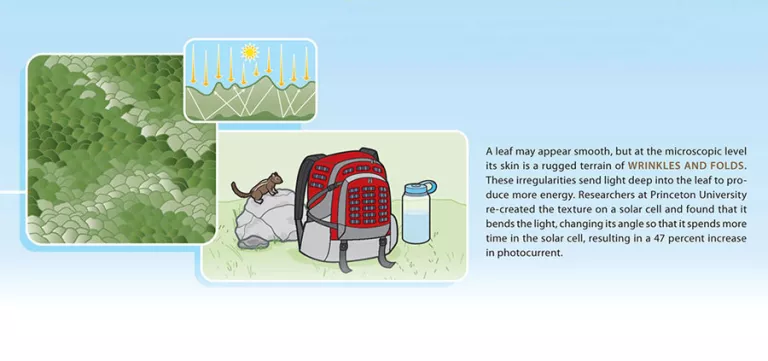
A leaf may appear smooth, but at the microscopic level its skin is a rugged terrain of wrinkles and folds. These irregularities send light deep into the leaf to produce more energy. Researchers at Princeton University re-created the texture on a solar cell and found that it bends the light, changing its angle so that it spends more time in the solar cell, resulting in a 47 percent increase in photocurrent.
FOND OF FRONDS

One sunny day in May 2010, Jong Bok Kim sat outside his Princeton University office staring at a shrub. Kim, a postdoctoral researcher in chemical and biological engineering, wanted to find the best skin for a solar cell. Would the most electricity be produced by a surface of tiny strips, pyramids, or mirrors? Then he realized that the shrub held the answer.
Kim returned to his desk to read up on how leaves gather light. He marveled at their genius: The facade of a leaf is blanketed with transparent cells that work like magnifying lenses. And the microterrain is scored with millions of ridges that guide light rays deep inside.
Kim, 34, knew how to create a rough surface like that on the nanoscale; while in college in Seoul, Korea, he had worked on making better LED displays by tinkering with their molecular structure. So he created a solar cell skin that mimicked that of a leaf, and he measured how much light entered the cell. "I knew it would increase efficiency, but I didn't know by how much," Kim says. Surprisingly, his panel with the leaflike skin absorbed six times more infrared light than one with a flat surface.
To compound the usefulness, Kim conducted his experiment using a plastic solar cell instead of the usual silicon. These cells yield a fraction of the electricity but are far cheaper and can withstand stretching and bending. Plastic cells could make a flexible skin for, say, a backpack. Kim is tinkering with fabric that spends much of its life in sunshine--curtains. If draperies are meant to block light, he figures, those frustrated photons might as well be captured by a plastic solar curtain to create some useful electricity.
To make the solar curtain more powerful, he intends to go back and learn more from the bushes. "What could be better than a leaf?" he says.
Illustrations by Brown Bird Design
 The Magazine of The Sierra Club
The Magazine of The Sierra Club
